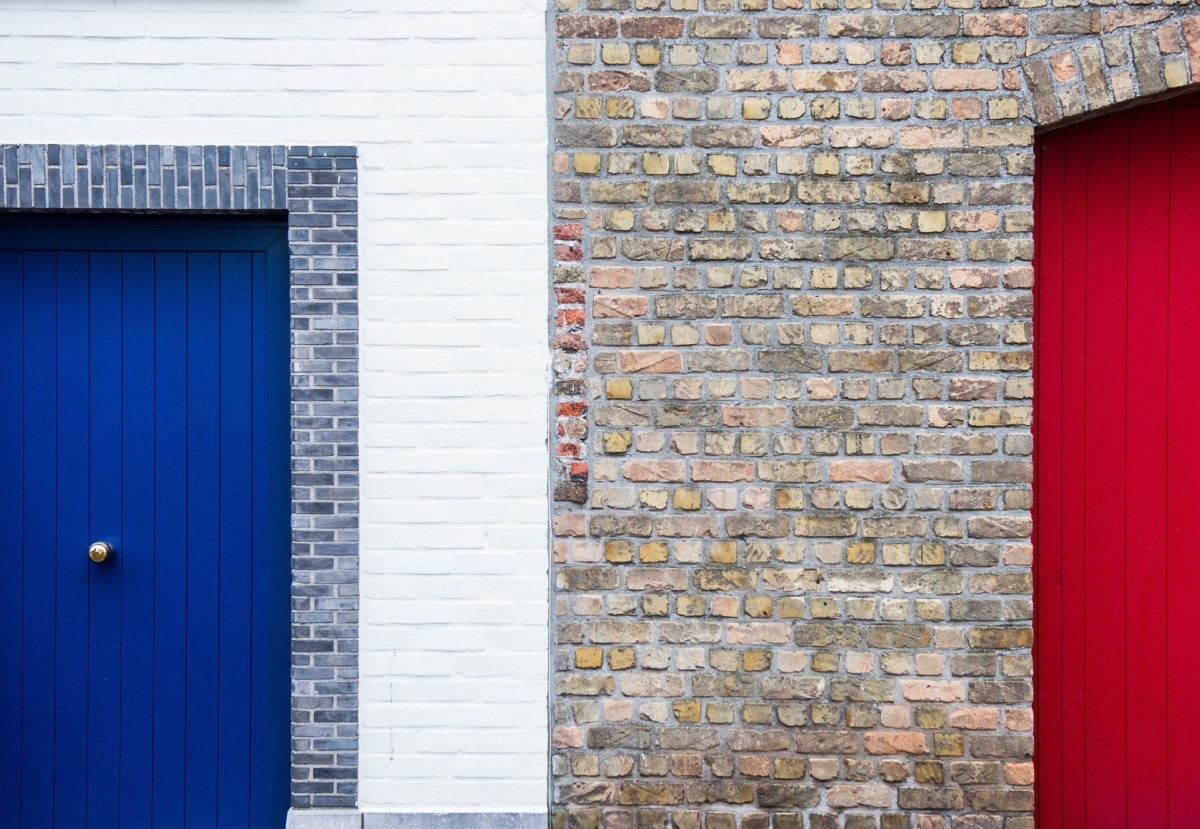There are lots of mixed opinions when it comes to painting brick homes. Some homeowners love the idea of sprucing up their classic brick house with a fresh coat of paint, while others wince at the thought of covering up the original brick. So if you are deciding whether or not to paint your brick house, we’ve outlined the benefits and downsides to help you make an informed decision.

What are the benefits of painting brick?
Painting the exterior of your brick house is a quick and easy way to bring an outdated home back to life and give it a fresh new look. It can also improve your curb appeal, protect your home from nature’s elements, and is easy to maintain. Let’s break down these benefits a bit further.
Curb appeal
One of the biggest benefits of painting brick is it can drastically improve your curb appeal. New paint can completely transform the look of your home without an expensive remodel. Opt for classic white for a crisp clean look, or try a darker color to create a bold statement.
Protection
Although sturdy, original brick can deteriorate from nature’s elements. Water can become trapped within the pores, and the sun can cause fading. Painting over brick provides a barrier that protects the exterior of your home and the original brick itself.
Easy to maintain
Once you paint, there are fewer nooks and crannies in the exterior of your home for dirt and other debris to hide. When you see the exterior begin to look dingy, simply hose down the sides and use a sponge to scrub with a mixture of dish detergent and warm water – pressure washing can damage the paint.

What are the downsides of painting brick?
Getting back to the look of the original brick is nearly impossible once it is painted. Not only is it difficult to retrieve the authentic look, but painting with the wrong paint can trap existing moisture and cause damage. Take these downsides into consideration when making your decision.
Permanence
As mentioned, painting a brick home is a permanent decision and reversing the look to the original brick is extremely difficult. If you do attempt to restore the brick, stripping the paint can cause damage, so it will likely never look how it did before the paint was applied.
Moisture
Painting can trap existing moisture which can cause the brick to deteriorate and damage the bond between two bricks – the mortar. Chipped paint and cracks could indicate serious damage within the brick due to moisture, and can be an expensive problem to fix if not caught earlier.
Maintenance
After a few years, the paint will begin to peel and it will be time for a fresh new coat. To correctly maintain painted brick, a new coat should be reapplied every 3 to 5 years. Depending on the climate where you live, exterior maintenance could be required more frequently.

How to paint a brick house
If you decide that painting your brick home is the right decision for you, necessary prep work and the right paint are crucial in creating a long-lasting painted exterior. Exterior painters are experienced and can aid in your project, but here are things to consider if you DIY.
Prep work
Before painting, you will need to inspect your home and confirm your bricks are in good condition. Making sure your bricks aren’t crumbling due to moisture is essential. Minor damage to brick can be fixed with acrylic caulk and for larger holes and suspected moisture damage, professionals can assist to make sure the damage is dealt with.
Once you have determined that you have a strong base, you will need to clean the entire exterior to make sure no dirt and debris are trapped within the pores of the brick. Pressure washing the exterior will be the most efficient way to achieve this. When pressure washing, make sure you are using a low pressure so there is no damage.
Painting brick
Set aside time for the bricks to fully dry so they don’t trap moisture. After they are dry, the next step is to prime. Priming is essential to fill in the pores of the brick, allowing the paint to go on evenly. After the exterior is completely primed and dry, you can begin adding your paint. Professionals typically use breathable paint since regular exterior paint can trap moisture within the brick with nowhere to go, causing corrosion. Any 100% acrylic latex paint is recommended. since it is breathable and durable.
There is a lot to consider when painting. Be sure to weigh the pros and cons as this isn’t a decision that should be made lightly. If you’ve decided to move forward with painting, it’s important that you consult or hire professional painters who have experience with this type of project.
